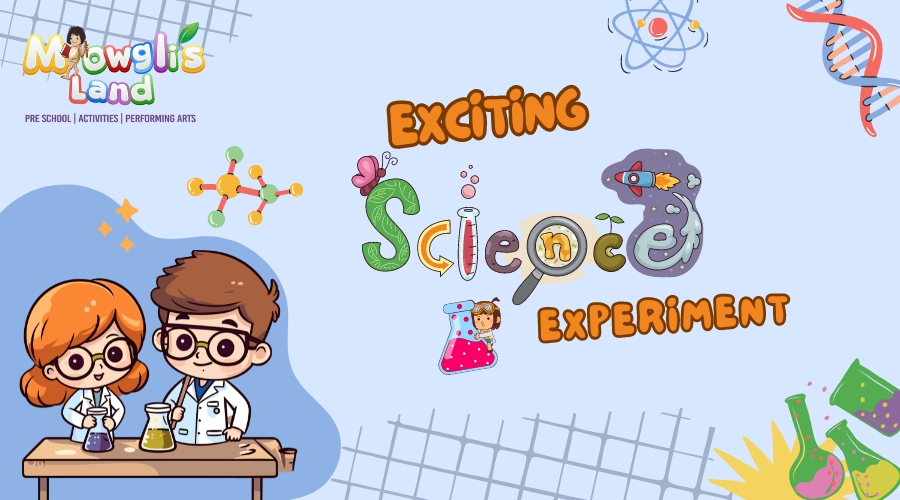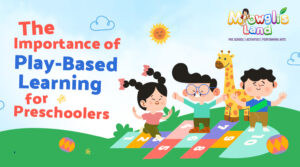Are you looking for a way to spark your child’s curiosity and make learning science fun?
Look no further! In this article, we have compiled a list of 10 exciting and simple science experiments that your kids will love. From creating a volcano eruption to making a homemade lava lamp, these experiments are guaranteed to capture their attention and leave them wanting more. Each experiment is carefully designed to be safe and age-appropriate for kids of all ages.
With Mowgli’s Land, let’s turn your kitchen into a laboratory and watch as your child’s eyes light up with wonder. Get ready for hours of fun and discovery as your little scientists explore the world of science!
Importance of Hands-on Learning in Science
Hands-on learning is essential in early childhood education, especially in science. It allows preschoolers to explore, experiment, and discover the world around them through direct experience. This approach fosters curiosity and enhances problem-solving skills. By engaging in hands-on science activities, children can better understand scientific concepts, develop fine motor skills, and gain confidence to learn and explore.
Safety Precautions for Science Experiments
Safety is a crucial aspect when conducting science experiments with young children. Always supervise activities closely, and ensure that all materials used are non-toxic and safe for children. Here are some key safety precautions:
- Wear Protective Gear: Safety goggles and gloves can protect eyes and skin.
- Work in a Safe Environment: Conduct experiments in a well-ventilated area with a clean, clutter-free workspace.
- Use Child-Friendly Materials: Avoid chemicals and use safe, everyday items.
- Supervise at all Times: Never leave children unattended during experiments.
- Teach Safety Rules: Educate children on the importance of following instructions and handling materials carefully.
Fun and Educational Science Experiments for Preschoolers
1. Exploring Density with Oil and Water
Materials: Water, vegetable oil, food coloring, clear glass or jar
Procedure:
- Fill the glass halfway with water.
- Add a few drops of food coloring.
- Slowly pour vegetable oil into the glass until it is nearly full.
- Observe how the oil floats on top of the water due to its lower density.
Discussion: Explain that density is the reason why oil and water don’t mix. Oil is less dense than water, so it stays on top.
2. Creating a Homemade Volcano
Materials: Baking soda, vinegar, dish soap, food coloring, small container, tray
Procedure:
- Place the small container on the tray.
- Fill the container halfway with baking soda.
- Add a few drops of dish soap and food coloring.
- Pour vinegar into the container and watch the “volcano” erupt.
Discussion: The reaction between baking soda and vinegar produces carbon dioxide gas, causing the bubbly eruption.
3. Investigating Static Electricity
Materials: Balloon, wool cloth, small paper pieces
Procedure:
- Inflate the balloon and tie it off.
- Rub the balloon vigorously with the wool cloth.
- Hold the balloon close to the small paper pieces and observe how they stick to the balloon.
Discussion: Rubbing the balloon transfers electrons from the wool to the balloon, creating static electricity that attracts the paper.
4. Making a DIY Slime
Materials: School glue, baking soda, contact lens solution, food coloring, mixing bowl, spoon
Procedure:
- Pour 113 g of glue into the mixing bowl.
- Add a few drops of food coloring and mix well.
- Add 1/2 teaspoon of baking soda and mix.
- Slowly add 1 tablespoon of contact lens solution while stirring until the slime forms.
Discussion: The chemical reaction between the glue, baking soda, and contact lens solution creates a stretchy, gooey slime.
5. Egg in a Bottle Experiment
Materials: Hard-boiled egg, glass bottle with a slightly smaller opening than the egg, matches
Procedure:
- Light a match and drop it into the bottle.
- Quickly place the egg in the bottle’s opening.
- Watch as the egg gets sucked into the bottle.
Discussion: The burning match heats the air inside the bottle. When the match goes out, the air cools and contracts, creating a vacuum that pulls the egg inside.
6. Invisible Ink Experiment
Materials: Lemon juice, cotton swab, white paper, heat source (lamp or iron)
Procedure:
- Dip the cotton swab in lemon juice and write a message on the paper.
- Allow the paper to dry completely.
- Hold the paper near a heat source and watch the message appear.
Discussion: The heat causes the lemon juice to oxidize and turn brown, revealing the hidden message.
7. Building a Balloon Rocket
Materials: Balloon, straw, string, tape
Procedure:
- Thread the string through the straw, and tie the ends of the string to two stationary objects.
- Inflate the balloon and pinch the end without tying it.
- Tape the balloon to the straw.
- Release the balloon, and watch it zoom along the string.
Discussion: The escaping air propels the balloon forward, demonstrating Newton’s third law of motion.
8. Creating a Rainbow in Glass
Materials: Sugar, water, food coloring, clear glass, spoon
Procedure:
- Dissolve different amounts of sugar in separate containers of water, adding food coloring to each.
- Carefully layer the sugar solutions in the glass, starting with the most concentrated (heaviest) solution at the bottom.
Discussion: The varying densities of the sugar solutions prevent them from mixing, creating a colorful rainbow effect.
9. Making a Homemade Lava Lamp
Materials: Vegetable oil, water, food coloring, Alka-Seltzer tablets, clear plastic bottle
Procedure:
- Fill the bottle two-thirds with vegetable oil.
- Add water until the bottle is nearly full.
- Add a few drops of food coloring.
- Drop in half an Alka-Seltzer tablet and watch the lava lamp effect.
Discussion: The Alka-Seltzer tablet creates carbon dioxide bubbles that rise through the oil, carrying water droplets with them and creating a lava lamp effect.
10. Growing Crystals at Home
Materials: Borax, hot water, pipe cleaners, pencil, string, jar
Procedure:
- Shape the pipe cleaner into a fun shape and tie it to the pencil with string.
- Fill the jar with hot water and dissolve borax until it no longer dissolves.
- Hang the pipe cleaner shape in the solution so it doesn’t touch the sides.
- Leave the jar overnight and observe the crystal growth.
Discussion: As the solution cools, the borax particles come out of the solution and attach to the pipe cleaner, forming crystals.
Also read: Butterfly Arts & Crafts for Your Preschooler!
Conclusion: Encouraging Curiosity and Learning through Science Experiments
By conducting these simple experiments at Mowgli’s Land Preschool, children learn about science and develop critical thinking and problem-solving skills that benefit them throughout their education.
Furthermore, hands-on science experiments are also a fantastic way to encourage curiosity and learning in preschoolers. These activities make scientific concepts fun and foster a love for exploration and discovery!




